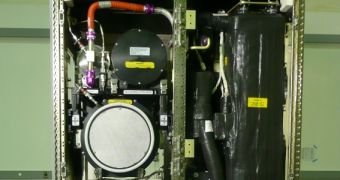One of the most important things a crew on a long-term space expedition will absolutely need is oxygen. The more time astronauts spend in space, the higher the need becomes for access to technologies capable of regenerating oxygen at extremely high rates. Recognizing this necessity, NASA is now calling for proposals on how such advanced systems can be built.
Long-duration human spaceflight missions have been one of the American space agency's major goal for decades, but numerous technologies that were previously unavailable are currently becoming available, bringing this prospect ever closer to reality. With the first mission to Mars just 15 to 20 years away, the agency is feeling the pressure to come up with adequate life-support technologies.
Future space travelers will require a relatively large spacecraft, much more so than the Orion Multipurpose Crew Vehicle (MPCV) that NASA is developing for its planned Martian mission, and for capturing a near-Earth asteroid by 2025. Such a vehicle would have to be pressurized, and also feature a breathable atmosphere whose oxygen would have to be replenished somehow.
NASA is now very interested in the development of a system for regenerating oxygen that is efficient, reliable over the long haul, safe, and also lightweight. When it comes to launching a spacecraft into a transfer orbit, every extra kilogram counts for determining the shape and size of the required rocket, and every extra centimeter requires extremely precise planning.
The NASA solicitation will consist of two phases. The first calls for the submission of plans detailing the design, development, fabrication and testing of the new technology. Phase II, which will span two years, will center around the selected team developing a prototype of the hardware systems they are proposing. The main goal is to achieve a minimum oxygen recovery rate of 75 percent.
“Lengthy spaceflight missions in Earth's orbit and beyond must have life support systems that are more self-sufficient and reliable. The spacecraft life support system technologies for this proposal must significantly improve the rate of oxygen recovery while achieving high degrees reliability,” says expert Michael Gazarik.
“NASA and its partners will need to develop new technologies to ‘close’ the atmosphere revitalization loop,” adds the official, who holds an appointment as the associate administrator for space technology at NASA Headquarters, in Washington DC.
The new call for proposals does not allow oxygen recovery system designs to exceed current dimensions. The challenge for applicants will be to develop a device with 75 percent conversion efficiency that does not otherwise impact other design requirements for a future spacecraft. Ideally, the prototypes would be smaller and consume less energy than existing devices.

 14 DAY TRIAL //
14 DAY TRIAL //